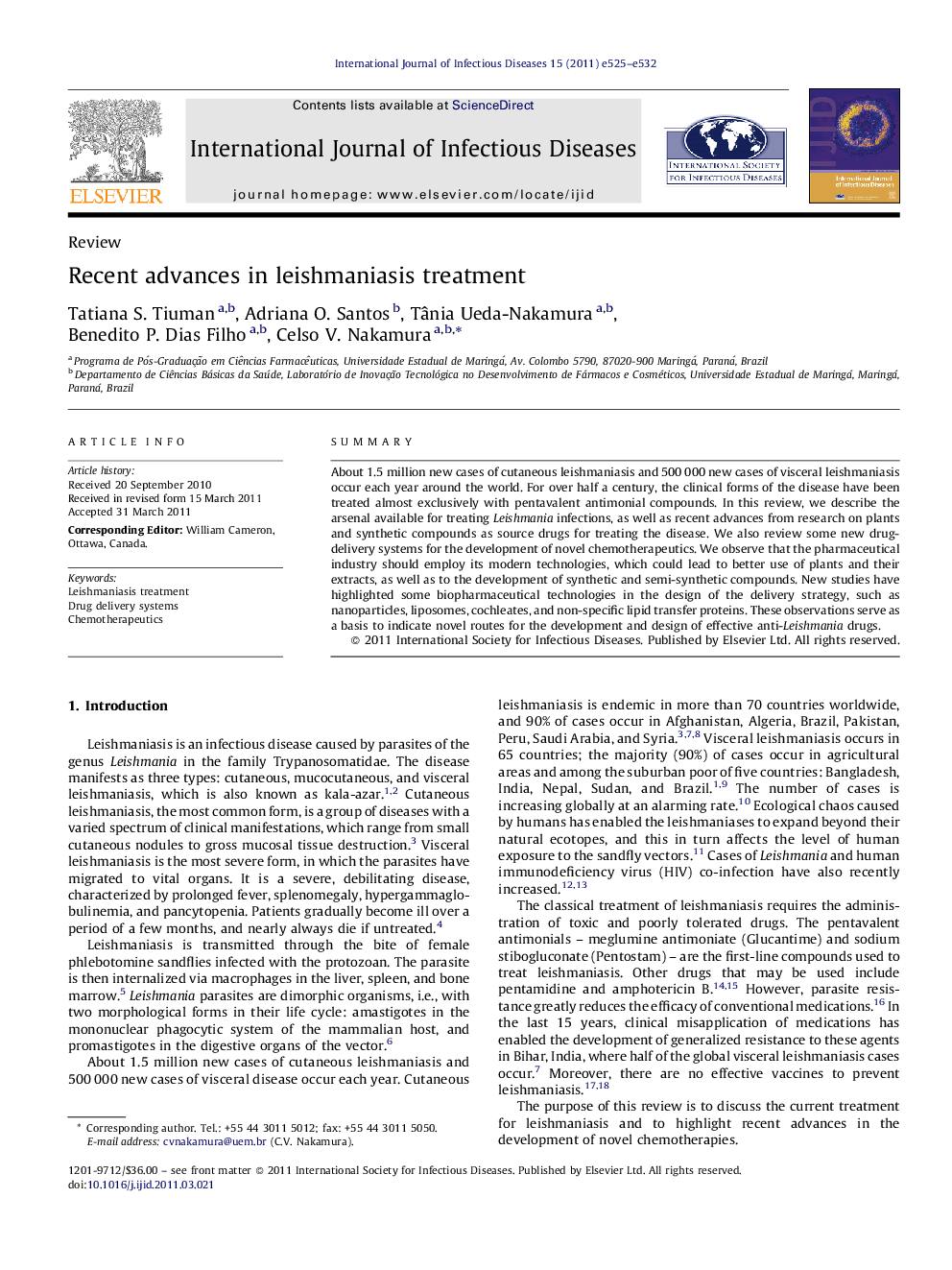| Article ID | Journal | Published Year | Pages | File Type |
|---|---|---|---|---|
| 3363941 | International Journal of Infectious Diseases | 2011 | 8 Pages |
SummaryAbout 1.5 million new cases of cutaneous leishmaniasis and 500 000 new cases of visceral leishmaniasis occur each year around the world. For over half a century, the clinical forms of the disease have been treated almost exclusively with pentavalent antimonial compounds. In this review, we describe the arsenal available for treating Leishmania infections, as well as recent advances from research on plants and synthetic compounds as source drugs for treating the disease. We also review some new drug-delivery systems for the development of novel chemotherapeutics. We observe that the pharmaceutical industry should employ its modern technologies, which could lead to better use of plants and their extracts, as well as to the development of synthetic and semi-synthetic compounds. New studies have highlighted some biopharmaceutical technologies in the design of the delivery strategy, such as nanoparticles, liposomes, cochleates, and non-specific lipid transfer proteins. These observations serve as a basis to indicate novel routes for the development and design of effective anti-Leishmania drugs.
